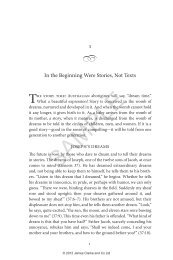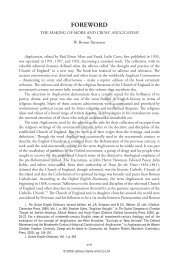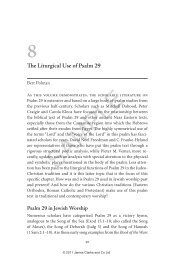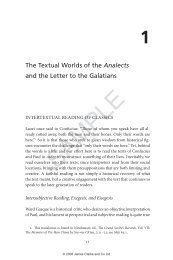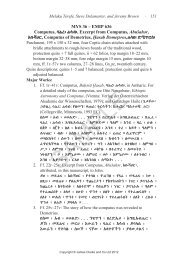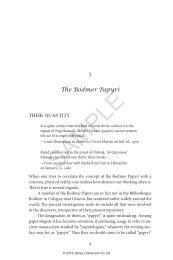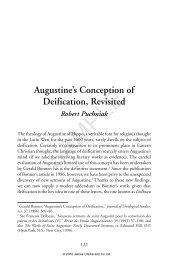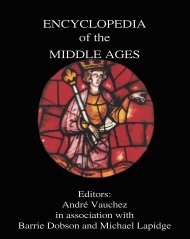Introduction by Kirk R. MacGregor - James Clarke and Co Ltd
Introduction by Kirk R. MacGregor - James Clarke and Co Ltd
Introduction by Kirk R. MacGregor - James Clarke and Co Ltd
Create successful ePaper yourself
Turn your PDF publications into a flip-book with our unique Google optimized e-Paper software.
<strong>Introduction</strong><br />
h<strong>and</strong>,” reflects the Johannine autograph. Rather, the original text of John<br />
pronounced, “That which my Father has given to me is greater than all,<br />
<strong>and</strong> no one can snatch it out of the Father’s h<strong>and</strong>,” indicating the supreme<br />
greatness of Jesus’ sheep <strong>and</strong> their collective identity as a most precious<br />
gift <strong>by</strong> the Father to the Son. Due both to the irrevocable nature of the<br />
Father’s gift to the Son <strong>and</strong> to the infinite worth of believers, both individually<br />
<strong>and</strong> collectively, in the Father’s sight, the salvation of believers is<br />
forever secure. Relating it to John the Baptist’s maxim that “a person can<br />
receive nothing unless it is given to him from heaven” (3:27), Michaels<br />
places this promise in the larger context of John’s Gospel, where it is seen<br />
that God the Father decides the citizenship of his Kingdom <strong>by</strong> drawing<br />
disciples, who then validate their status as an intertrinitarian gift <strong>by</strong> coming<br />
to Jesus. In the high-priestly prayer of John 17, Jesus substantiates<br />
this reasoning <strong>by</strong> placing his disciples, past <strong>and</strong> present, in his list of gifts<br />
the Father has bestowed upon him (vv. 6, 9, 24). Given this assessment,<br />
Michaels closes his essay <strong>by</strong> displaying its added hermeneutical value for<br />
fully underst<strong>and</strong>ing the multilayered meanings of Christ’s parables about<br />
the treasure in the field <strong>and</strong> the pearl of great price (Matt 13:44–46),<br />
which are now seen to span two vantage points. For believers, the treasure<br />
<strong>and</strong> the pearl connote the Kingdom of God; but for Jesus himself, the<br />
treasure <strong>and</strong> the pearl allude to the company of the redeemed, an insight<br />
corroborated <strong>by</strong> a rare but probable logia Jesu from the Gospel of Philip<br />
independent of the canonical Gospels.<br />
Branching out from this locus classicus <strong>and</strong> building on the hermeneutical<br />
groundwork laid <strong>by</strong> Michaels, the next two chapters continue in<br />
Johannine studies with detailed analyses of individual pericopae furnishing<br />
unshakable assurance of the believer’s salvation.<br />
In chapter three, Shawn L. Buice probes John 6:38–40 for its ability<br />
to reveal the will of God, cognizance of which is vitally important for<br />
Christian discipleship <strong>and</strong> yet often seems a la<strong>by</strong>rinth incredibly difficult<br />
to decipher in particular life situations for laypeople <strong>and</strong> theologians<br />
alike. This confusion is increased <strong>by</strong> the nature of the scriptural witness<br />
itself: unlike such codes of religious law as the Jewish Mishnah or<br />
the Theravada Buddhist Vinaya Pitaka, the Bible features an absence of<br />
texts straightforwardly explaining what to do when faced with particular<br />
situations. However, John 6 explicitly identifies the will of God as, first,<br />
Jesus losing none of those the Father has entrusted him but resurrecting<br />
them on the last day, <strong>and</strong> second, the eternal life plus final resurrection,<br />
SAMPLE<br />
xxii<br />
© 2011 <strong>James</strong> <strong>Clarke</strong> <strong>and</strong> <strong>Co</strong> <strong>Ltd</strong>





